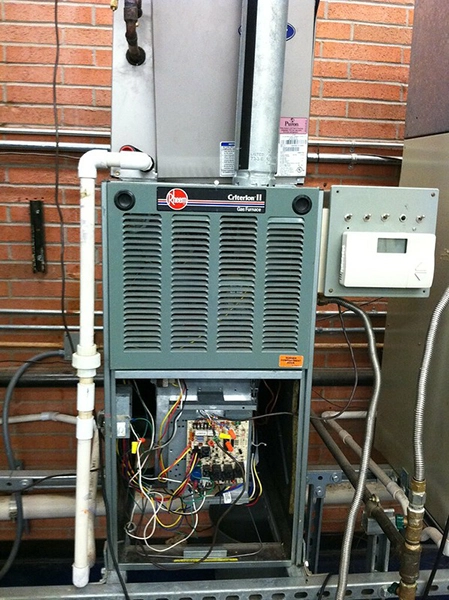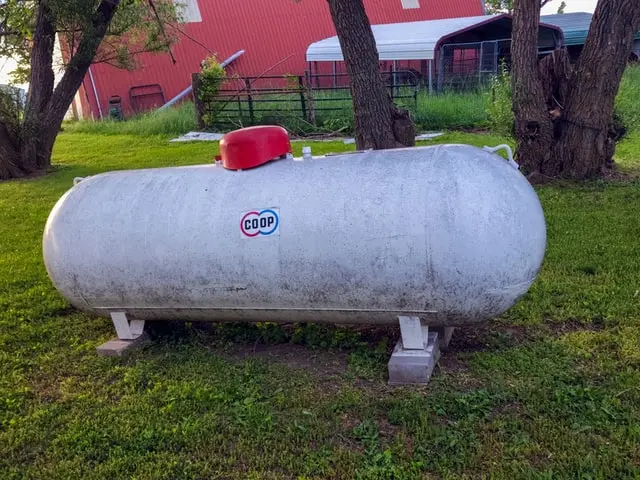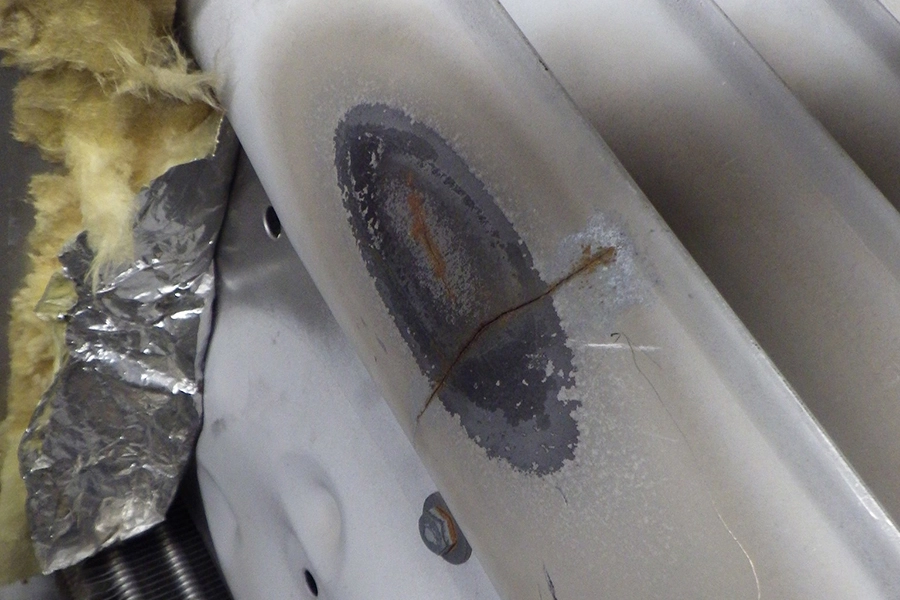Not sure what kind of home furnace you have? This article will help you identify what type of furnace you have in your home and give you some considerations if you’re considering replacing it.
What is a furnace?
A furnace is an appliance that pulls cooler air from your home, heats the air, and then distributes it back into your home. This can be done by burning a fuel source that heats a metal chamber or by using electrical wires that get red hot, similar to a toaster, to warm the air before it is delivered into your home.
Since a furnace utilizes air movement and ductwork, it’s not uncommon for a furnace to be air moving mechanism for air conditioning.
What’s the difference between a boiler and a furnace?
Another heating option, called a boiler, heats water and then pumps the water into heating coils or radiators throughout the house to create warmth.
The major difference between a boiler and a furnace is how heat is delivered; a furnace uses air and a boiler uses water.
A furnace heats the air as it passes through the furnace as described above.
A boiler heats water and feeds it into radiators throughout your home or heating coils within your ductwork. The heating coil in your ductwork will act in the same manner as a heating chamber in your furnace. The air passing by it will absorb the heat, and then it will be relocated into your home.
How is the heat delivered throughout the home?
The gas, propane, oil, and electric furnace will all have a blower motor that pulls and pushes the air throughout your home. The air is heated by the furnace and moved into a central supply duct that splits off all the different supply vents throughout your home. At the same time, the return vent is pulling air into the furnace to start the cycle all over again.
This will be the same concept when cooling the air. With a fuel-burning furnace, you will have to have a coil installed separately from the furnace so that the air can pass through. If you have an electric furnace, it will come with a pre-installed coil in the unit cabinet.
What are the types of furnaces?
There are generally four types of furnaces based on their fuel source. These do not include options that burn wood.
- Natural gas furnace
- Propane furnace
- Oil furnace
- Electric furnace
Natural gas furnace
A natural gas furnace will create heat by burning precisely what it is named for, natural gas. It is a more popular option in states with colder and longer winters than electric heat.
A natural gas furnace will be fed by natural gas piped into your home. Typically, a company that works closely with your city, or the city themselves, provide the gas as a utility. Natural gas is an excellent option as a fuel source because it has a consistent and affordable price. With the ever-present concern for environmental protection, some states are beginning to place bans on the new installations of natural gas connections to homes.

Pros:
- Generally lower operational cost over electric furnaces.
- A natural gas furnace will produce much warmer air than an electric furnace with faster heat. Therefore, it heats the home quicker.
- Versatility, you could pair a natural gas furnace with a heat pump to create a hybrid system.
Cons:
- Due to the constant extreme heating to cooling cycles the furnace goes through, a shorter life span is unlikely to last more than 10 to 15 years.
- You will require an accessible gas line in the street to tap into if it’s not already plumbed to your home
- Interior gas line – if you have gas in your home, you will need to plumb a gas line to the furnace if it’s not there already.
- Exhaust – your gas furnace will have to have an exhaust. If you do not already have the proper type of exhaust, you will have to have one installed.
Propane gas furnace
Propane is a good choice for people who do not have access to natural gas and who have high electric rates.
While natural gas is generally either operated and maintained by the city or by a company that works along with the city, propane is stored in propane tanks near the home to be piped to each gas-burning appliance.
As far as how a propane furnace works, it is the same as a natural gas furnace. When a propane furnace is installed, it’s a natural gas furnace. The install technicians will make a few pressure changes and replace a few essential parts, such as the orifices that the fuel flows through, and now you have a propane furnace.

Pros:
- Propane burns at a slower rate than natural gas
- Creates more BTU/H per gallon compared to natural gas
- Cheaper to operate than electric furnaces
- Good for remote areas since you’re not relying on city infrastructure
Cons:
- It produces less BTU/H per gallon than oil.
- It might be costly to switch to propane due to the tank cost or rental fee and any gas lines you will have added.
- Propane tends to fluctuate in price depending on the demand, similar to the concept of how gas prices rise and fall. This means you could have a high cost to fill your propane tank in the middle of winter when the prices go up.
Oil furnace
Like natural gas and propane, oil furnaces operate by creating a fire from the fuel source.
However, unlike natural gas and propane furnaces, oil furnaces burn a liquid. The oil is pulled to the furnace by a pump which filters it and then sprays it into the burner chamber as a very fine mist. This fine mist makes the oil much more flammable, burning quite well. Once it is burnt, the fumes that are left are pushed out of your exhaust.
Like the other furnaces, the heat created by the flames heats the burner chamber while the blower fan blows air across it. Once the burner chamber heats the air, it blows into your home, heating the space.

Pros:
- The unit is cheaper than the natural gas or propane competitor.
- It has a lifespan of up to 30 years with proper maintenance.
- Oil furnaces will not leak carbon monoxide into your home, which is possible with other fuel-burning furnaces. It is also flammable but not explosive.
Cons:
- You will have to have a storage tank to hold the oil on your property.
- The cost of oil can be volatile due to it being imported.
- The unit itself gets very hot and must be installed safely. It is best to install in open areas where the unit’s heat will benefit.
Electric furnace
Electric furnaces are the most common type of heat in the more southern and western states where there is not such intense cold weather.
Electric furnaces are significantly different than the other options on the list because they do not utilize fire to heat the air for your home. Generally, an electric furnace will be tied in with a heat pump which will be the first heat source. A heat pump will transfer heat instead of creating it like the other options.
However, your electric furnace should be equipped with heat strips. These heat strips will be long coils, similar to springs, and will be mounted in the supply end of your electric furnace.
Have you ever looked inside your toaster while your toast was cooking? Did you notice how the wires on the sides of the toaster would get red hot and put off enough heat that you could feel it out of the top of the toaster? Well, that is the basic principle of heat strips. The coils get red hot as the air blows across them. As the air goes across the heat strips, it picks up the heat and carries it into your home.

Pros:
- Electricity is readily available. You will not have to worry about your electrical tank running dry because you forgot to check how much you had left.
- Electric furnaces are among the cheapest options for the initial purchase cost.
- While fuel-burning furnaces are 80% to 96%+ efficient, electric furnaces are 100% efficient. A fuel-burning furnace cannot use every last bit of fuel. However, an electric furnace can. All of the electricity used is put into the unit.
Cons:
- It is common for electricity to be one of the most expensive heating fuel sources.
- If anything happens to the unit, it will need to be repaired by an experienced professional to assure your safety.
- It will commonly take longer for an electric furnace to begin heating the air when compared to a fuel-burning furnace.
How can I tell which one I have?
Unsure of what kind of furnace you have? Here are a few tips to help you identify the type of furnace you’re looking at.
How do I know I have an electric furnace?
You will be able to tell if you have an electric furnace by just taking a quick look at the unit. An electric furnace will have large wires entering it and have no signs of an exhaust vent.
How do I know if I have a gas furnace?
In a broad sense, you will be able to tell if you have a fuel-burning furnace by looking for the vent and the gas line. A traditional furnace will have a metal pipe for exhaust. At the same time, a high-efficiency unit will use PVC pipe. Both propane and natural gas furnaces will have a gas line entering the unit that you should be able to find.
How do I know if I have a natural gas or propane furnace?
The difference between natural gas and propane will be tricky. You will have to take the cover off with the burner assembly behind it. Whenever someone switches a unit from natural gas to propane, they are supposed to label the gas valve that has been converted clearly.
Usually, the propane kit you use to convert it will come with stickers that say LP or one that explains that this unit has been altered or are bright yellow and say propane. Suppose your unit does not have any of these stickers, then it is most likely a natural gas unit. If you are still unsure, then look around outside. You probably have natural gas if you cannot find a propane tank.
How do I know if I have an oil-burning furnace?
The two most straightforward ways to find out if you have an oil-burning furnace are that it will have to have a large storage tank for the oil, and it will have a pump on the front of the furnace to pump the oil. Now sometimes, this is not as easy as it sounds. Sometimes your tank might be buried in the yard, which will have its own set of issues, or the pump is behind a cover. These are things that you may have to investigate a little further to find out for sure.
How is a furnace sized?
Furnace size is referred to in BTU/H or BTU, which stands for British Thermal Unit per Hour. One BTU is measured as the energy it takes to heat one pound of water 1 degree in 1 hour. The most common furnaces used are 60,000, 80,000, 100,000, or 120,000 BTU models.
These BTU ratings will coincide with the “tons” we reference in the air conditioning sizing. For example, a 60,000 BTU furnace would be paired with a two or 3-ton air conditioning system depending on the fan’s size. But regardless of the size of the air conditioner, it will still have the same 60,000 BTU capacity on the heating side.
There are heating and air conditioning contractors that will ballpark the amount of AC tonnage to square feet of your home. Generally, they will say between 400 and 600 square feet per ton of cooling. However, this is inaccurate and may result in your home heating and air conditioning being sized incorrectly.
To be sized accurately, you will need to have qualified heating and air technician perform a load calculation on your home to see what the requirements truly are for your home to be comfortable.
How to choose the right furnace?
There will be a lot of factors that go into this decision, as each home is different, and what each homeowner expects out of their system may be slightly different.
Replacement or new installation: Are you replacing your existing unit or installing a new system? If you need a new furnace, the most cost-effective option is to go back with the same style. If you have to run new electrical wires to the unit, or if you have to add a gas line and vent installation, then the price may increase significantly.
Preference: There is also the matter of preference which may supersede the price of switching types. If you have suffered extremely high electric bills or propane bills, or if your heat pump did not seem to heat up well enough, you might be willing to pay the extra to switch. It may pay itself off in the long run.
Some other things to consider when deciding is what do you already have?
- What type of equipment is there now?
- Does it already have ductwork installed?
- Are there vents for the furnace already installed?
- What are your options for natural gas from the city infrastructure or propane delivery?
- What is the best decision for the future (consider your state’s recent legislature on fuel sources)?
- What type of climate do you live in? (Frigid, harsh winters vs. very mild winters)?
- What type of efficiency are you hoping to achieve?
Final thoughts
Your personal preferences and budget will decide which type of unit you want to be installed. All furnaces do their job exceptionally well, but each has its positives and drawbacks.
If you are on the fence, you should call your local trusted heating and air professional and discuss your options and pricing. Then you will have more concrete numbers in hand and some expert advice to help you decide on the best course of action for your specific situation. Don’t forget to consider upfront costs AND operating costs – maybe that switch will pay for itself.




